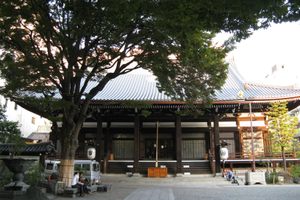Amidst the many quaint and boutique shops that line the bustling Teramachi street of Kyoto, visitors may easily miss this plain and unassuming temple. It is here, however, that one of the “Three Great Unifiers” of Japan’s Sengoku Period met his end.
In 1582, following nearly a century of social upheaval and civil war, Oda Nobunaga had emerged as a prominent warlord. After successfully subduing a number of other prominent samurai clans, he had nearly unified the warring country.
His rise came to an abrupt end on June 21st, 1582, when one of his most trusted generals, Mitsuhide Akechi, turned his forces against him in a shocking betrayal. Realizing there was no way out, Nobunaga committed ritual suicide. In the ensuing battle known as “the incident at Honnō-ji,” the temple complex was almost entirely burned down, along with any trace of Nobunaga’s remains.
In 1592, the temple was rebuilt at its current location, before burning down and being rebuilt several times over the years, with its main hall most recently rebuilt in 1928.
Today, the temple grounds are dotted with various memorials and statues commemorating Honnō-ji’s history in a site incorporating elements typical of Nichiren sect temples (a branch of Japanese Buddhism). Visitors can also explore the temple’s treasures room, which safeguards religious relics, folding screens, tea utensils, and other artifacts preserved over time.


